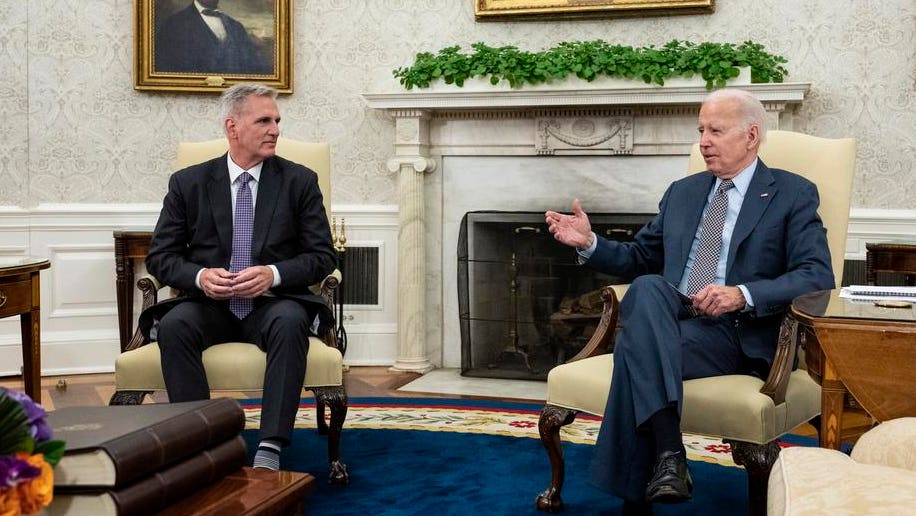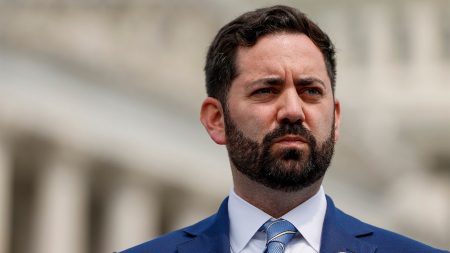The House of Representatives has passed the debt ceiling compromise bill negotiated by President Joe Biden and House Speaker Kevin McCarthy (R-CA). The bill passed with a comfortable bipartisan majority, and now heads to the Senate. Biden is expected to sign the measure by Monday. The legislation will have a direct impact on student loan borrowers, preserving the president’s student loan forgiveness initiative and repayment plan overhaul, but officially ending the student loan pause.
The final legislation was the product of intense negotiations between the White House and House Republican leadership. The measure will raise the nation’s borrowing limit to early 2025. In exchange, the Biden administration agreed to some concessions on federal programs and government spending.
While Biden managed to largely preserve many of his core legislative and administrative accomplishments, progressives have been critical of some elements of the deal, arguing he gave away too much. Conservatives have also been critical of Speaker McCarthy, suggesting he did not extract nearly enough concessions from the administration.
Here’s what the bill means for student loan forgiveness, repayment, and future debt relief.
Student Loan Forgiveness Is Preserved
House Republicans wanted to repeal Biden’s one-time student loan forgiveness plan, which would cancel up to $20,000 in federal student loan debt for millions of borrowers. The initial debt ceiling bill the House passed in April would have repealed this initiative, and Republicans had insisted that they would not agree to raise the debt ceiling if the student loan forgiveness plan was allowed to proceed.
But Biden managed to take student loan forgiveness repeal off the table during negotiations, and it was not included in the final compromise bill. Congress is advancing a separate bill to repeal Biden’s student loan forgiveness initiative, and it appears poised to pass this week. But he has promised to veto the measure, which would prevent it from becoming law.
The fate of Biden’s student loan forgiveness plan ultimately now rests with the Supreme Court. A ruling is expected by the end of this month.
Student Loan Repayment Plan Overhaul Can Proceed
The Biden administration announced a proposed overhaul of income-driven repayment earlier this year. The plan would significantly lower monthly payments for millions of borrowers, and shorten some borrowers’ student loan forgiveness terms. The proposal has a number of additional benefits, including curtailing interest accrual and providing more flexibility to married borrowers.
House Republicans wanted to use the debt ceiling negotiations to force Biden to rescind this proposed overhaul. Virginia Foxx (R-NC), chair of the Education and the Workforce Committee, had criticized the plan as a “radical alteration to the Income-Driven Repayment program” and a “backdoor attempt to drive through the president’s free college agenda” in remarks earlier this month.
But Biden managed to preserve this plan, and its repeal was excluded from the final debt ceiling bill. The new plan is not yet available for borrowers, but the Education Department is expected to phase in its benefits later next year.
Student Loan Pause Will End This Summer
The most significant student debt relief concession Biden made in the debt ceiling bill was codifying the end of the student loan pause. The moratorium on payments and interest for government-held federal student loans has been ongoing since March 2020, and the administration had argued that payments should not resume until borrowers were able to receive relief through Biden’s one-time student loan forgiveness plan.
The debt ceiling bill codifies what Biden administration officials had been suggesting for months — that the student loan pause will end 60 days after June 30. That means billing will effectively resume in late August, with the first payment due dates likely in late September or early October. This is not a retroactive nullification of Biden’s current extension of the student loan pause as congressional Republicans had sought, which advocacy groups warned would have had disastrous consequences for borrowers.
But codifying the end of the student loan pause essentially removes any possibility that Biden will extend it again. Advocates for borrowers were harshly critical of the Biden administration for agreeing to this, particularly given the possibility that the Supreme Court could strike down the student loan forgiveness plan. This would thrust millions of borrowers back into repayment without receiving the debt relief they had been promised.
“Restarting student loan payments on the accelerated timeline included in the debt ceiling bill will add thousands of dollars to the average borrower’s loan balance and force many into loan delinquency,” said Jaylon Herbin, director of federal campaigns at the Center for Responsible Lending in a statement on Wednesday.
New Emergency Could Be Basis Of New Student Loan Pause
While the debt ceiling bill removes any possibility that Biden can extend the student loan pause beyond this summer, it preserves the administration’s ability to issue a new student loan pause in response to a different national emergency.
The HEROES Act of 2003 allows a president to modify or waive normal federal student loan program rules, including regulations requiring repayment, in response to a national emergency. Former President Trump and President Biden both relied on this authority to issue (and then extend) the student loan pause in response to the Covid-19 national emergency.
If a new national emergency arises, Biden (or a future president) would be able to issue a new student loan pause if necessary to protect borrowers from economic harm.
Other Biden Administration Student Loan Forgiveness And Debt Relief Programs Remain Intact
The debt ceiling bill does not impact the Biden administration’s implementation of other critical student loan relief programs. This includes the Limited PSLF Waiver, which was a temporary initiative that has led to more than 600,000 borrowers working in public service jobs receiving student loan forgiveness. This also includes the IDR Account Adjustment, another one-time initiative that will benefit millions of borrowers; the Biden administration is just starting to roll out that program.
The bill also does not prevent the Biden administration from issuing other student debt relief initiatives. Republicans had sought to prevent the Education Department from enacting new regulations that increase the cost of the federal student loan program. But those limits did not make it into the final compromise legislation.
Further Student Loan Forgiveness Reading
If The Supreme Court Rejects Student Loan Forgiveness Plan, Biden Could Do This
Senate Advances Bill Repealing Biden’s Student Loan Forgiveness And Debt Relief Plans
Lowering Student Loan Payments Just Got Easier Amid Uncertainty Over Loan Forgiveness
Student Loan Forgiveness Eligibility Expanded In 3 Ways Under New Account Adjustment Guidance
Read the full article here













